Reviews
Randal Kleiser
USA, 1986
Credits
Review by Leo Goldsmith
Posted on 14 August 2010
Source Disney DVD
Categories Favorites: Time Travel
Released amid a flood of similarly kid-oriented sci-fi films (like SpaceCamp and Solarbabies, and even the unabashedly family-friendly Star Trek IV: The Voyage Home), Disney’s Flight of the Navigator was no great box-office success upon its initial release in 1986. It wasn’t until its subsequent revival on ABC’s The Wonderful World of Disney that the film achieved any notice at all, but in more recent years, it seems to have calcified into something of a children’s classic, at least in the memories of those who were children in the 1980s. And in some ways, the resurgent reputation of Flight of the Navigator - a film about a boy lost in time for eight years, returning to a world he doesn’t quite belong in, but one that remembers him fondly - is actually rather fitting.
Fitting, perhaps—but also a little creepy. Nostalgia is a faulty sort of time machine, and hindsight about once-treasured children’s entertainment is rarely 20/20. To say that Flight of the Navigator is a film best relegated to the Memory Hole is perhaps a little unfair—it is, after all, not without its moments. But returning to the film after twenty-four years later, one may find Flight of the Navigator’s wishful, sentimental narrative of return really only proves that one cannot go home again.
As if to flout this assertion from the start, the first part of the film knowingly and rather morbidly seems to play upon various forms of nostalgia: longing for home and family, for childhood (and specifically prepubescence), and for “simpler times.” The film’s premise involves twelve-year-old Davy Freeman who, after an irritating tussle with his pesky younger brother Jeff in a misty Florida forest one balmy 1978 night, falls down a ravine and is knocked cold. When he wakes up hours later and returns home, he finds that eight years have passed, even though he has no recollection of the interval and hasn’t aged a day. His parents, now looking haggard with age and worry, and no doubt shattered by what they have presumed to be Davy’s abduction and murder, have long since left the family home, but his return brings an overwhelming, if utterly perplexing relief.
After the initial shock of his return, Davy attempts to pick up where he left off, though his presence is of course something of a curiosity. He’s never seen a music video before, has no familiarity with Twisted Sister (“Who’s she?”), and has been lapped in his physical development by his once-younger brother Jeff. (Jeff is now sixteen, whereas Davy remains twelve, still just beginning to think about girls and stuff.) Soon, doctors begin to probe the mysteries of Davy’s condition, submitting him to a series of tests of his amnesia and his lack of maturation. His parents at first resist this—they seem to take the position that all that matters is that Davy’s back, and they’d almost just as soon not know where he’s been (or with whom) or what has happened to him.
Though we can be fairly sure that this film will not depart from the usual patterns of a Disney film by probing the issue of child-abduction too deeply, this dark, melancholy first section is still indelibly disturbing, suggesting both the concrete horrors of children’s faces on milk-cartons and tragic news stories about broken families, as well as the more abstract terrors of lost family and lost childhood, of time slipping away. The film begins to feel sort of like A.I. avant la lettre, but as it’s also a product manufactured for family entertainment, it obviously doesn’t dwell on this point for long. Soon, it’s briskly moving on to brighter territory, with intercut sequences of NASA’s Dr. Faraday (played by Head of the Class’s Howard Hesseman) finding a floating UFO - sleek, chrome, shaped like a brain, and totally impermeable - that will set up the magical and narratively uplifting “flight” promised by the title.
Naturally, this mysterious object holds some of the answers to Davy’s disappearance and return, a revelation reinforced when the boy’s brain, subjected to neuropsychological testing, begins unwittingly communicating with the computer, uploading it with exotic star-charts and designs for the very spacecraft that NASA has located. Before long, NASA catches wind of this offers a theory of their own for Davy’s eight-year absence: Davy was kidnapped in this spacecraft and whisked away at light-speed, and as time theoretically slows down as one approaches the speed of light, what seemed like only a couple of hours to Davy was in fact eight earth years.1 For NASA, of course, this is a monumental discovery, and so they offer to “help” Davy by secreting him away in a lab and performing tests of their own.
What’s notable here is that NASA is itself portrayed as a group of geeky, dishonest kidnappers, but again the film doesn’t wish to emphasize this point. Davy is sufficiently distracted and then aided in his escape by a young Sarah Jessica Parker (who plays some kind of low-level NASA waitress), and briskly once again the film moves onto its well-calculated reward: Davy’s wild joyride back to his family on the alien spacecraft. It turns out that this pod - actually a Trimaxian Drone Ship, or Max for short - is an unmanned research craft that abducted Davy back in 1978 and, traveling faster than light speed, brought him to Phaelon for study, uploading him with all kinds of information in the process. Following an accident that erased its memory-banks, Max was himself captured by NASA, but needed the information implanted in Davy to return to Phaelon. Thus, the whiz-bang part of the movie finally begins, with Davy serving as “navigator” on a ship whose HAL-like computer is voiced by Pee-wee Herman (pseudonymously credited as “Paul Mall”).
Unfortunately, while this is ostensibly the fun part of the film, much of it is now deeply irritating, even unwatchable. The spacecraft’s interior is chrome and intricately realized, but Paul Reubens’ voicing of Max (with lines like “Hey, Blimpo! Oink oink! Too many Twinkies!” delivered to some random fat guy) pales in comparison to his work in Big Adventure, released only a year before.2 Similarly, the alien specimens that Max has collected, no doubt calculated to spark some kind of Ewok- or Gremlin-esque tie-in, all look like salvages from the Henson “discard” bin, and the performance of child actor Joey Cramer, who plays Davy, finally tips into insufferability with his fortissimo voce singalong to the Beach Boys.
And so, the film begins to feel less like a premonition of A.I. and more like a dim refraction of E.T. in which Davy is the one who must find his way - both physically and temporally - back home. With NASA breathing down his neck, Davy gives his present-day parents a quick “I’m sorry! I don’t belong here now!” and makes the risky trip back 1978, where his family is still eating burgers and his brother is still an eight-year-old pain the neck. This serves in some way as a sentimentally satisfactory conclusion, one the film has been quietly trudging towards all along: Davy affectionately tells his family he loves them, lessons have been learned about something or other, and all is well again. But after all the anxiety of abduction and displacement that has come before - not to mention the inter-temporal joyriding and alien probing - it’s a hollow and somewhat dishonest conclusion, one that (like Davy’s 1986 parents) seems unable to cope with the idea of any real experience or knowledge, any change. Uncomplicatedly, we return home to Davy’s original, perfect Fort Lauderdale evening in 1978 - with fireworks over the harbor and burgers with the family - and for us as well as Davy anything significant that may have interrupted this continuum can be safely relegated to the past.
- One of the most curious elements of this film is that it actually puts forward a theory of time travel that is plausible, or at least conforms to the best guesses of physicists since Einstein. This explains Davy’s trip through time and into the future, but there are two things that the film doesn’t explain: that a human traveling at the speed of light would be crushed into a thin purée; and how to go _backwards_ in time to the moment that he was abducted in 1978, as he does at the end of the film.↩
- It’s worth noting that director Randal Kleiser, who does a incredibly adequate job here, later directed the ignominious second Pee-wee film, _Big Top Pee-wee_. He’s also the man behind the after-school camp classic _The Boy in the Plastic Bubble_, _The Blue Lagoon_, and some movie called _Grease_.↩
More Favorites: Time Travel
-

Bill and Ted’s Excellent Adventure
1989 -
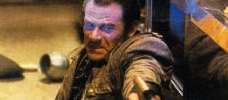
Trancers
1985 -

The Time Machine
1960 -

Groundhog Day
1993 -

Warlock
1989 -

The Navigator
1988 -
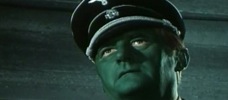
Tomorrow I’ll Wake Up and Scald Myself with Tea
1977 -

The Spirit of ‘76
1990 -
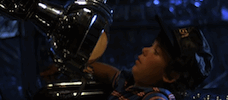
Flight of the Navigator
1986 -

La jetée
1962 -
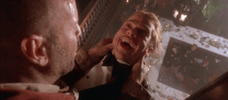
Twelve Monkeys
1995 -

Beastmaster 2: Through the Portal of Time
1991 -
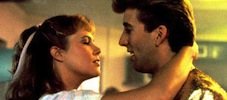
Peggy Sue Got Married
1986 -
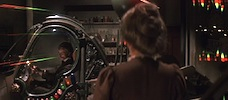
Time After Time
1979 -

Somewhere in Time
1980 -
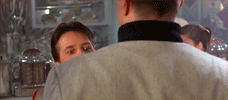
Back to the Future
1985 -

Back to the Future Part II
1989 -

Back to the Future Part III
1990 -
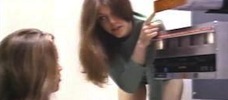
Idaho Transfer
1973 -
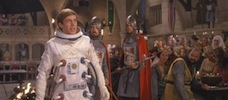
Unidentified Flying Oddball
1979 -

Slaughterhouse-Five
1972 -

The Lake House
2006 -

Time Bandits
1981 -

Doctor Who
1963–present -
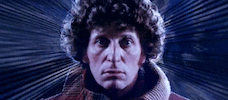
Doctor Who
1963–present
We don’t do comments anymore, but you may contact us here or find us on Twitter or Facebook.



